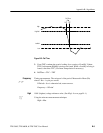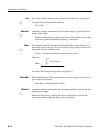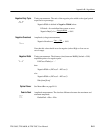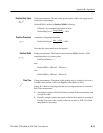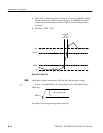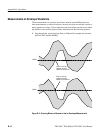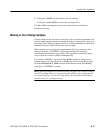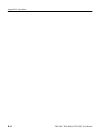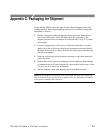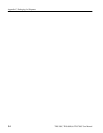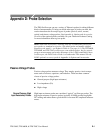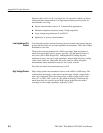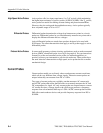
Appendix B: Algorithms
TDS 500C, TDS 600B, & TDS 700C User Manual
B–17
2. If the pair > MidRef, use the minima, else use maxima.
If all pairs straddle MidRef, use maxima. See Figure B–4.
The Burst Width measurement always uses both maxima and minima to
determine crossings.
Missing or Out-of-Range Samples
If some samples in the waveform are missing or off-scale, the measurements will
linearly interpolate between known samples to make an “appropriate” guess as to
the sample value. Missing samples at the ends of the measurement record will be
assumed to have the value of the nearest known sample.
When samples are out of range, the measurement will give a warning to that
effect (for example, “CLIPPING”) if the measurement could change by
extending the measurement range slightly. The algorithms assume the samples
recover from an overdrive condition instantaneously.
For example, if MidRef is set directly, then MidRef would not change even if
samples were out of range. However, if MidRef was chosen using the % choice
from the Set Levels in % Units selection of the Measure menu, then MidRef
could give a “CLIPPING” warning.
NOTE. When measurements are displayed using Snapshot, out of range warnings
are NOT available. However, if you question the validity of any measurement in
the snapshot display, you can select and display the measurement individually
and then check for a warning message.



